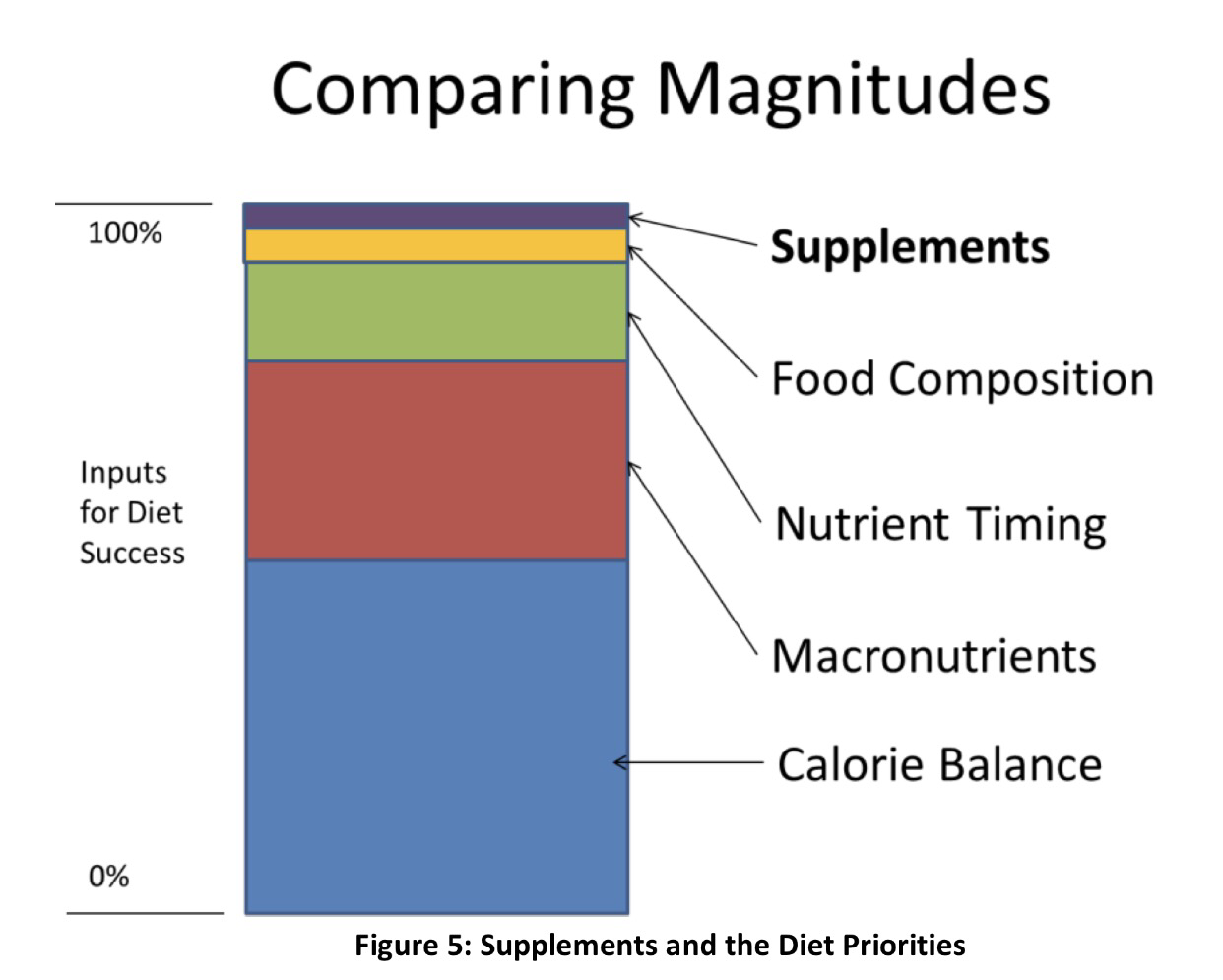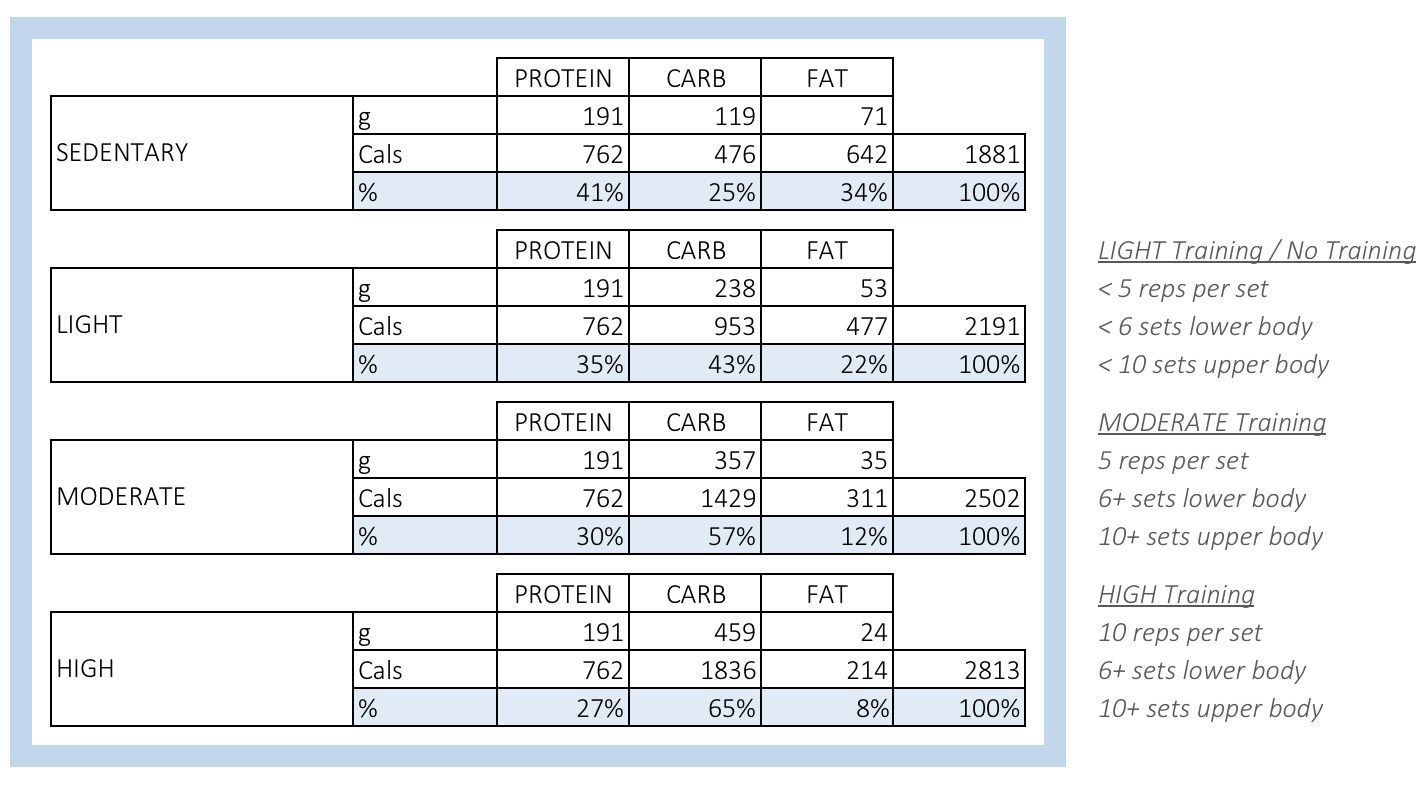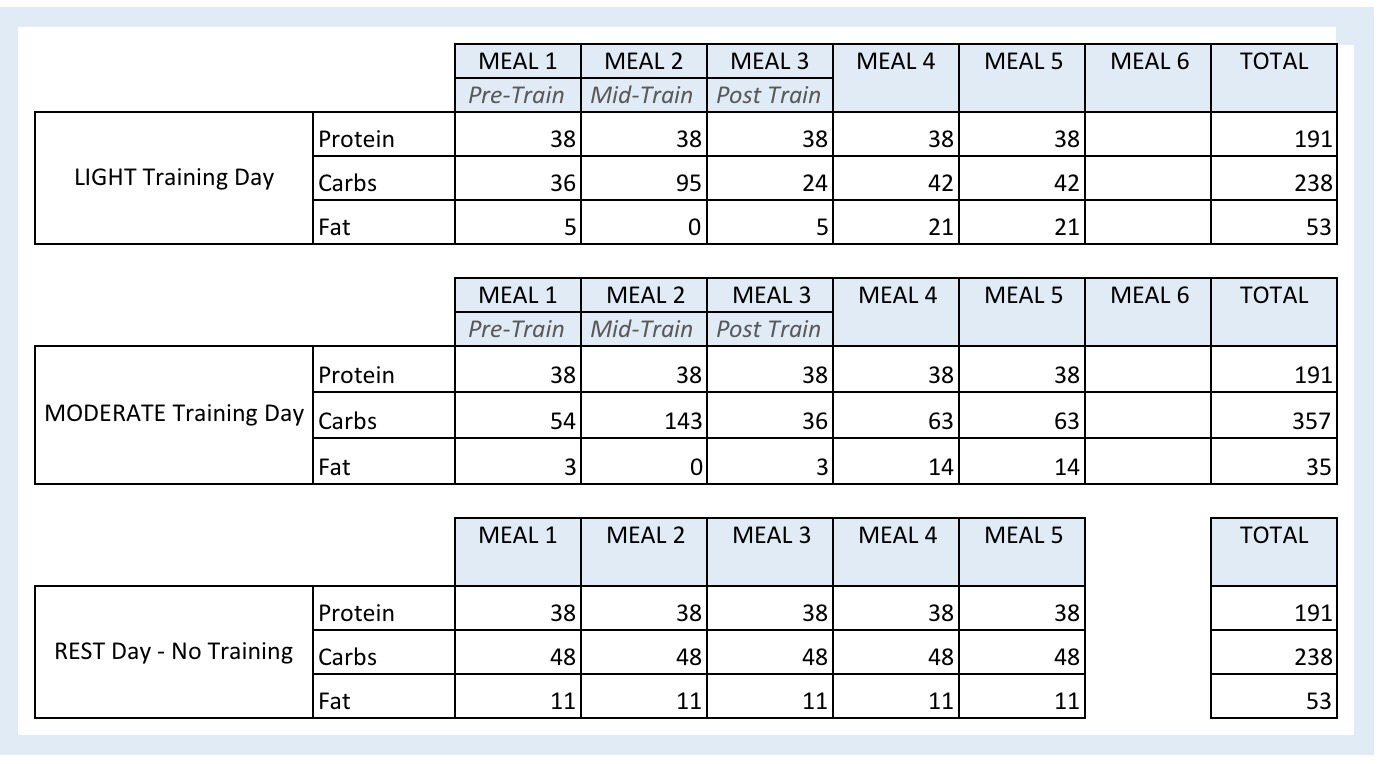A Renaissance Diet and IIFYM Calculator
***UPDATES
I’ve updated the spreadsheet so that it is now accessible as a Google Sheets document and I’ve created a new V2 to match the updated recommendations within the latest 2018 version of the RP book (Amazon link). Choose the version that matches whichever issue of the book you are working with, or if in doubt plump for V2.
The main differences between V1 and V2 are:
- separation of light and non-training days (V1 made no calorific distinction)
- minor adjustments to macro spread across meals, although I haven’t attempted to reflect the complexity shown in the RP customised templates (overkill in my opinion)
- small adjustments to daily allowances for light/moderate/high although these are only ever a starting point and should be tweaked based on actual results
IIFYM and Renaissance Diet calculator V1 (Google sheets document – save a copy to your own drive)
IIFYM and Renaissance Diet calculator V2 (Google sheets document – save a copy to your own drive)
Original IIFYM and Renaissance Diet calculator (This is my original excel workbook – I’ll leave the link live in case you prefer excel – it’s based on V1 of the book)
***ORIGINAL POST
I’ve started working with a new coach who as well as writing me a powerlifting program, has started to delve into the obvious problems with my nutritional approach. He came up with a ferociously tricky program for me to follow which was based heavily on the recommendations from the Renaissance Diet Book.
I’ve spent the last couple of weeks reading around these ideas and then drawing up an IIFYM and Renaissance Diet calculator (see updated links above) that will determine both my macros for any given goal and also churn out the macros per meal as recommended by the Renaissance Diet. I thought I would save you the bother of having to recreate, or worse still, buy your own calculator by sharing the workbook and instructions here and on the warriorwoman Resources page.
I will provide enough of an overview of the Renaissance Diet for you to be able to use the calculator but I won’t delve into the scientific background or some of the minutiae of the method. For that you will have to stump up and pay the exorbitant fee for the original book.
What is the Renaissance Diet
It’s a diet program designed by a group of smart exercise scientists (they have PhDs) who are clearly very experienced in strength sports and physical transformation. They use a program called Renaissance Periodisation where your macronutrients and calorie target are based on your weight, goals and training volume. These targets are then split into individual meal targets with the composition varying around your training program.
So for example, on a training day with 6 meals in total, your protein would be split equally across all meals as the aim is to maintain a steady supply of protein, fat would be omitted from your mid-training meal as its slower to digest and your carbs would be heavily weighted to the meals pre, during and post-workout.
In terms of food composition they provide a pick list of lean protein sources, veg, healthy fats and carbs.
What do I think of the Renaissance Diet?
Well, I like elements of it and hate others.
The macro composition targets seem robust and are based on per lb of bodyweight goals – we all know as strength athletes that we could probably afford to squeeze some more protein into our diets. Splitting these goals down per day is just about manageable but splitting down to individual meal targets is a right royal pain in the ass! I don’t know how people do it. In my Renaissance Diet workbook I do provide a meal calculator so you can follow along to the rigid guidelines if desired. I would be very interested to see how you manage each meal though. I’ve tried to draw up a few meal ideas that work but I have to call upon foodstuffs with single macronutrient contents in order to make it work.
The food composition causes me some difficulties too. The protein sources are all lean cuts of meat and include the abomination that is egg whites. I absolutely cannot countenance throwing away a nutritious egg yolk in order to reconstitute a meal with an egg white and some other form of healthy fat, eg. avocado or nut butter.
 All is not lost though. The guys who designed the Renaissance Diet have already prioritised each of their principles and as I am long way from the performance end of the scale where marginal gains are the name of the game, I am more than happy to abide by the first two principles which should get me about 80% of the rewards.
All is not lost though. The guys who designed the Renaissance Diet have already prioritised each of their principles and as I am long way from the performance end of the scale where marginal gains are the name of the game, I am more than happy to abide by the first two principles which should get me about 80% of the rewards.
Principles in order of priority:
- Calorie consumption
- Macro composition
- Meal Timing
- Food composition
- Supplements
If It Fits Your Macros – IIFYM
IIFYM is a popular movement with crossfitters and other strength athletes. It follows the belief that macro composition and calorie balance is the key to achieving your body goals. In that respect they have a lot in common with the Renaissance Diet guys.
 Where they differ is in food composition. IIFYM don’t give two hoots about food composition, a carb is a carb as far as they are concerned. If you want a doughnut and you need a shed load of carbs to meet your macronutrient targets then go ahead – have the doughnut.
Where they differ is in food composition. IIFYM don’t give two hoots about food composition, a carb is a carb as far as they are concerned. If you want a doughnut and you need a shed load of carbs to meet your macronutrient targets then go ahead – have the doughnut.
It’s the inspiration for my favourite brand of t-shirts: Deadlifts and Doughnuts.
The IIFYM and Renaissance Diet Workbook
This IIFYM and Renaissance Diet calculator (see links at top of page) workbook should work for you whether you want to determine daily macronutrient goals for IIFYM or the meal specific macros for the Renaissance Diet. It should also work for those who want to lose weight like me or those who are seeking bodyweight gains.
Macro Calculator
Start in the macro calculator tab and enter your personal details in the orange boxes, some of these are drop down selections to restrict your answers. Please note that I have not protected this spreadsheet in anyway, which means you are free to amend to suit your own needs but also means you can mess the whole thing up if you overwrite a formula.
The calculator used the Harris-Benedict formula to calculate your BMR (basal metabolic rate) it then adjusts this based on your weight loss / gain goals and then applies a multiplier based on your activity level.
The macros are then split in the following priority order:
- Protein based on 0.8 – 1.2 times bodyweight in pounds regardless of activity levels
- Carbs are split based on activity levels from 0.5 – 2 times bodyweight in pounds
- Fat consumes the remaining calories. It isn’t allowed to drop below 10% (grams) of your bodyweight in lbs e.g. Min fat consumption for a 200lb person is 20g. The balance is then extracted from the carb target.
The area in the blue box reveals your target macronutrient targets based on your training volume. For rest days and light workouts use the LIGHT section. You can use MODERATE or HIGH where your strength routines become more intense – see the guide next to the blue box.

If you try this for a couple of weeks and your weight isn’t going in the right direction then alter the calorie adjustment number in the appropriate direction and re-test. Although this looks like a precision exercise the formula for calculating BMR is based on averages of average people and we are anything but average!
That’s all you need for IIFYM go forth armed with these macro proportions, download MyFitnessPal and start recording. For a while I imagine you will get to the end of the day either needing a pure protein meal (try Quark) or pure carbs (an easier predicament), but as you get more experienced you’ll probably be able to balance out your days.
RP Meal Calculator
If you want to rule your gut with an iron rod then you can delve into the RP Meal Calculator tab
you must first complete the macro calculator described above and then your only action on the new tab is to choose the number of meals you want to go for – either 5 or 6 in my workbook although I think you can go as high as 8 in the full program.
The table in the blue box then reveals your per meal macronutrient targets in grams. You can move each meal number around according to when you exercise. It is initial set up to reflect a morning workout routine.
Let me know how you get on.
You might also be interested in my weekly macro planning spreadsheet which helps you to stay ahead of the game by planning your daily meals in a way that ensures you hit your RP macro targets consistently. I’ve linked you to my recent blog post where I explain how it works and provide you with a free download link.

